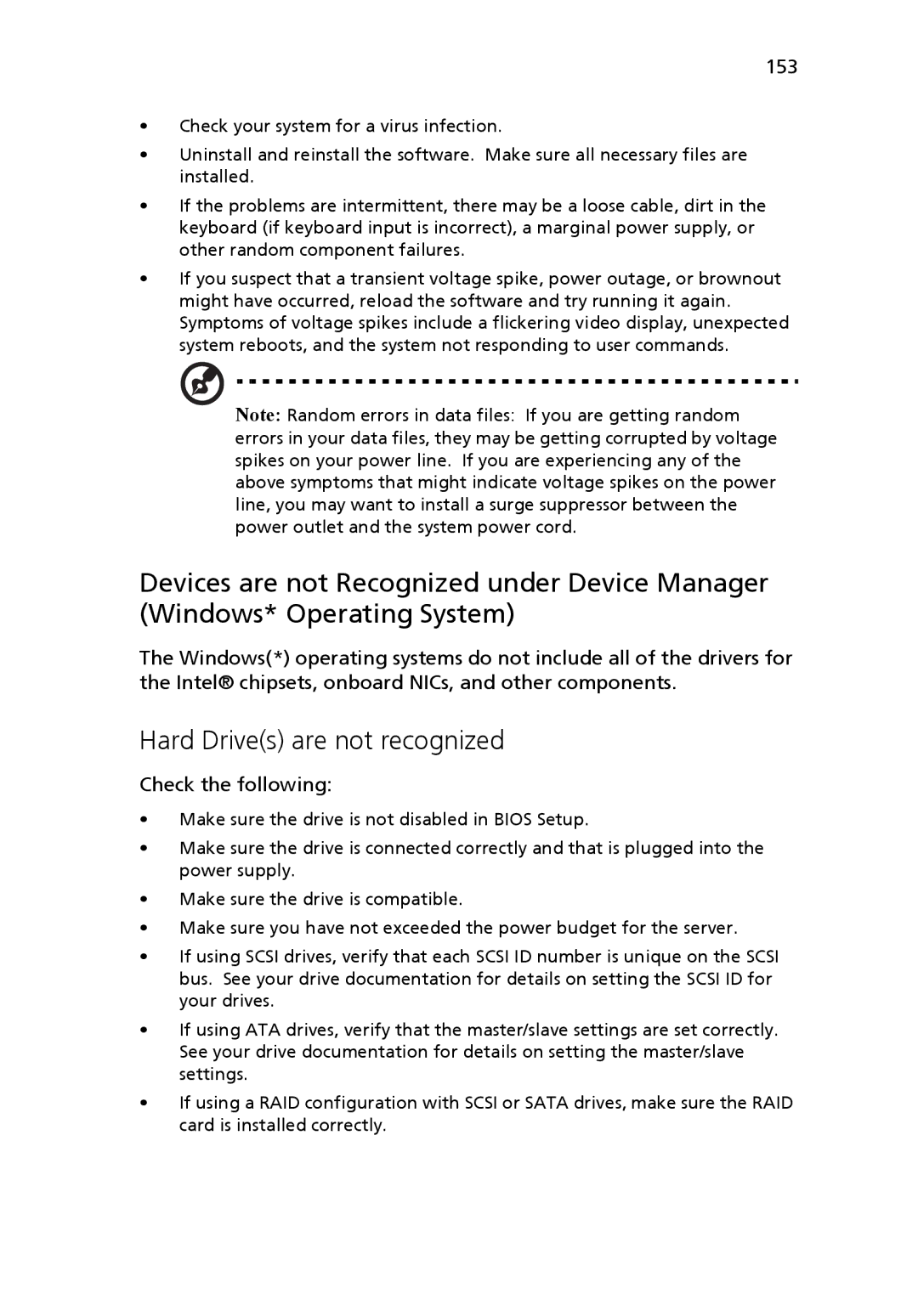153
•Check your system for a virus infection.
•Uninstall and reinstall the software. Make sure all necessary files are installed.
•If the problems are intermittent, there may be a loose cable, dirt in the keyboard (if keyboard input is incorrect), a marginal power supply, or other random component failures.
•If you suspect that a transient voltage spike, power outage, or brownout might have occurred, reload the software and try running it again. Symptoms of voltage spikes include a flickering video display, unexpected system reboots, and the system not responding to user commands.
Note: Random errors in data files: If you are getting random errors in your data files, they may be getting corrupted by voltage spikes on your power line. If you are experiencing any of the above symptoms that might indicate voltage spikes on the power line, you may want to install a surge suppressor between the power outlet and the system power cord.
Devices are not Recognized under Device Manager (Windows* Operating System)
The Windows(*) operating systems do not include all of the drivers for the Intel® chipsets, onboard NICs, and other components.
Hard Drive(s) are not recognized
Check the following:
•Make sure the drive is not disabled in BIOS Setup.
•Make sure the drive is connected correctly and that is plugged into the power supply.
•Make sure the drive is compatible.
•Make sure you have not exceeded the power budget for the server.
•If using SCSI drives, verify that each SCSI ID number is unique on the SCSI bus. See your drive documentation for details on setting the SCSI ID for your drives.
•If using ATA drives, verify that the master/slave settings are set correctly. See your drive documentation for details on setting the master/slave settings.
•If using a RAID configuration with SCSI or SATA drives, make sure the RAID card is installed correctly.
